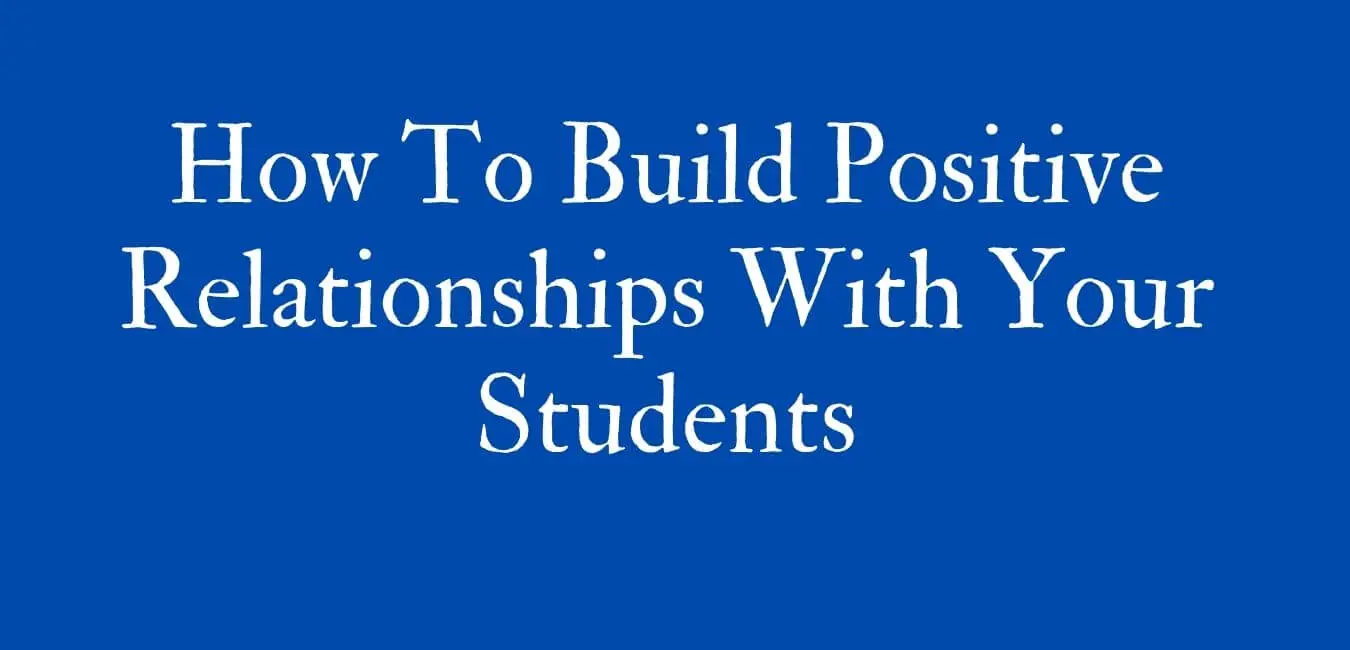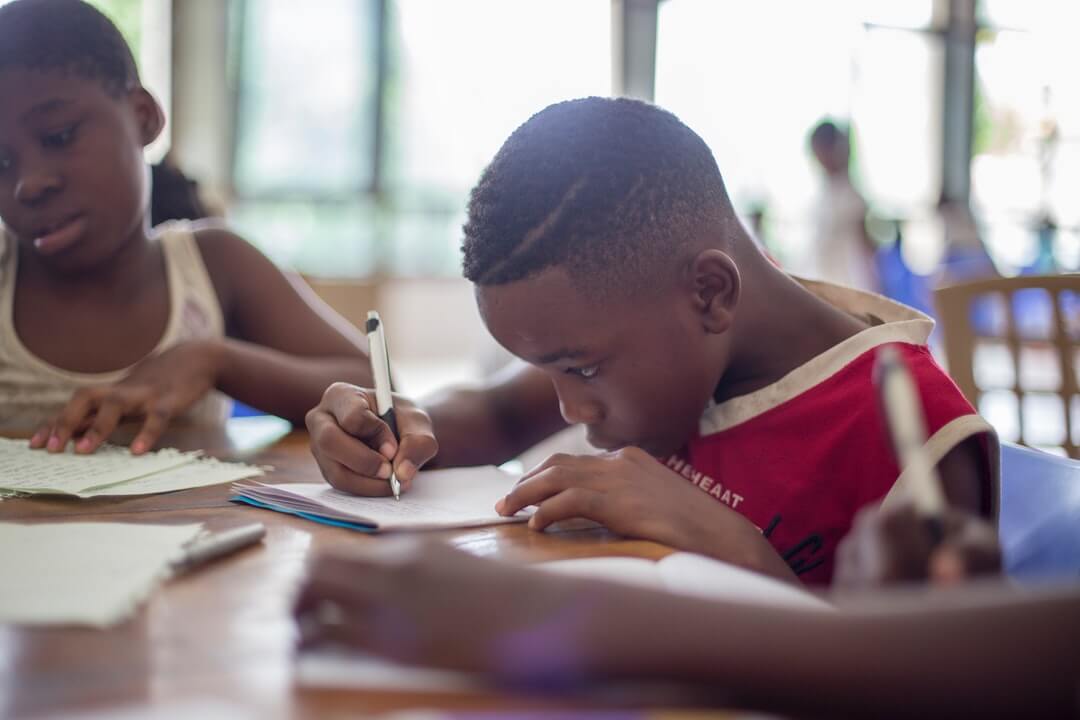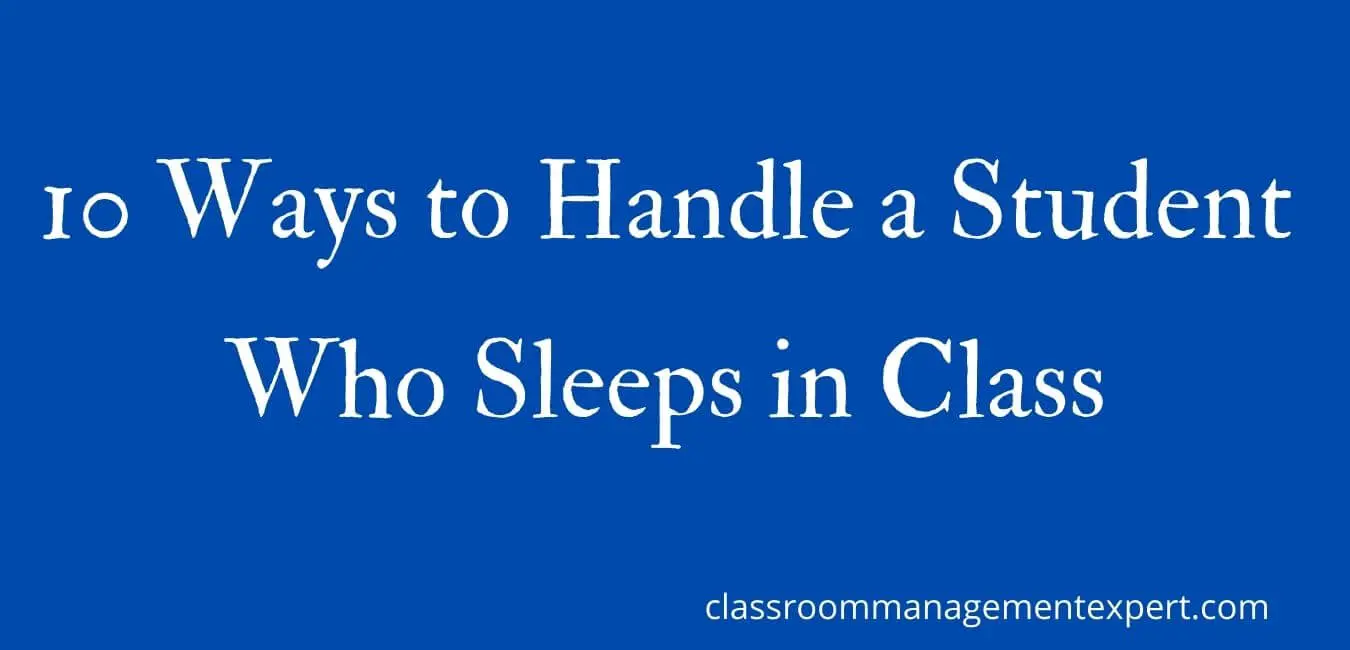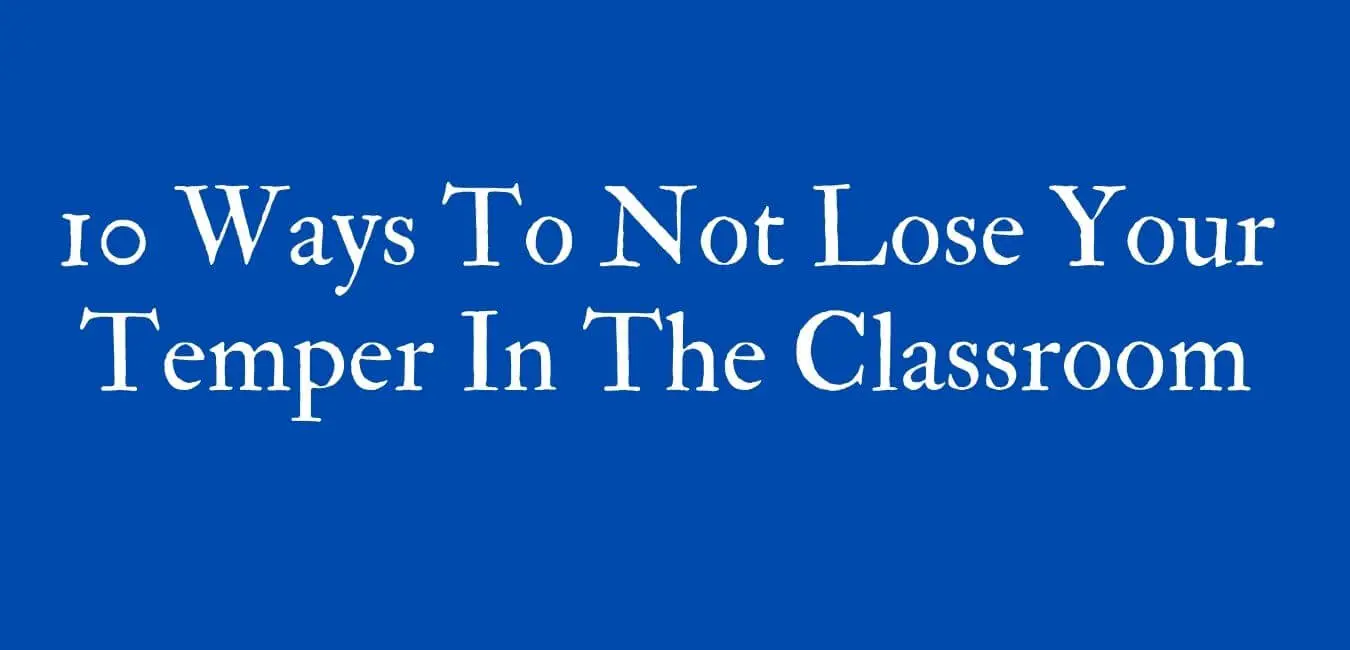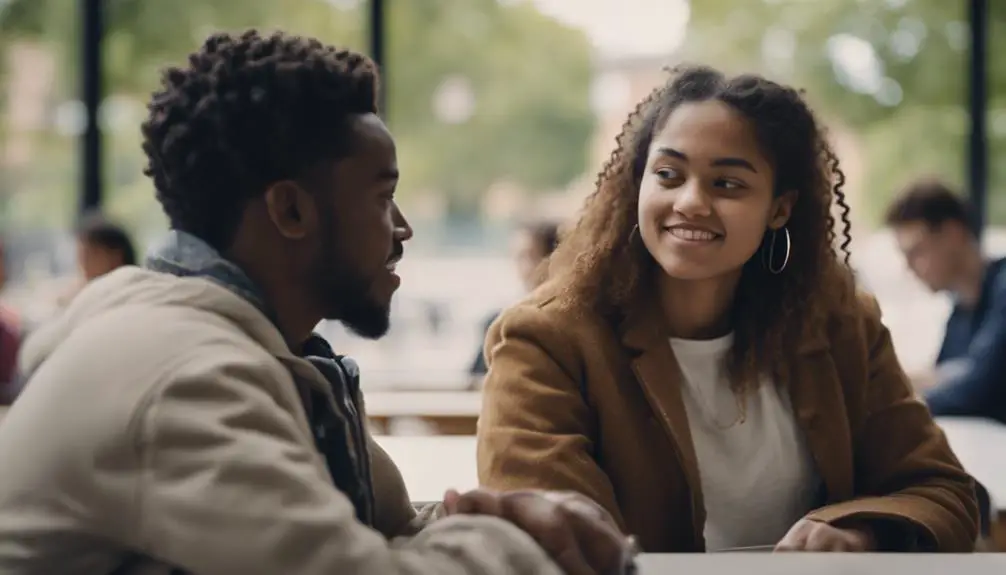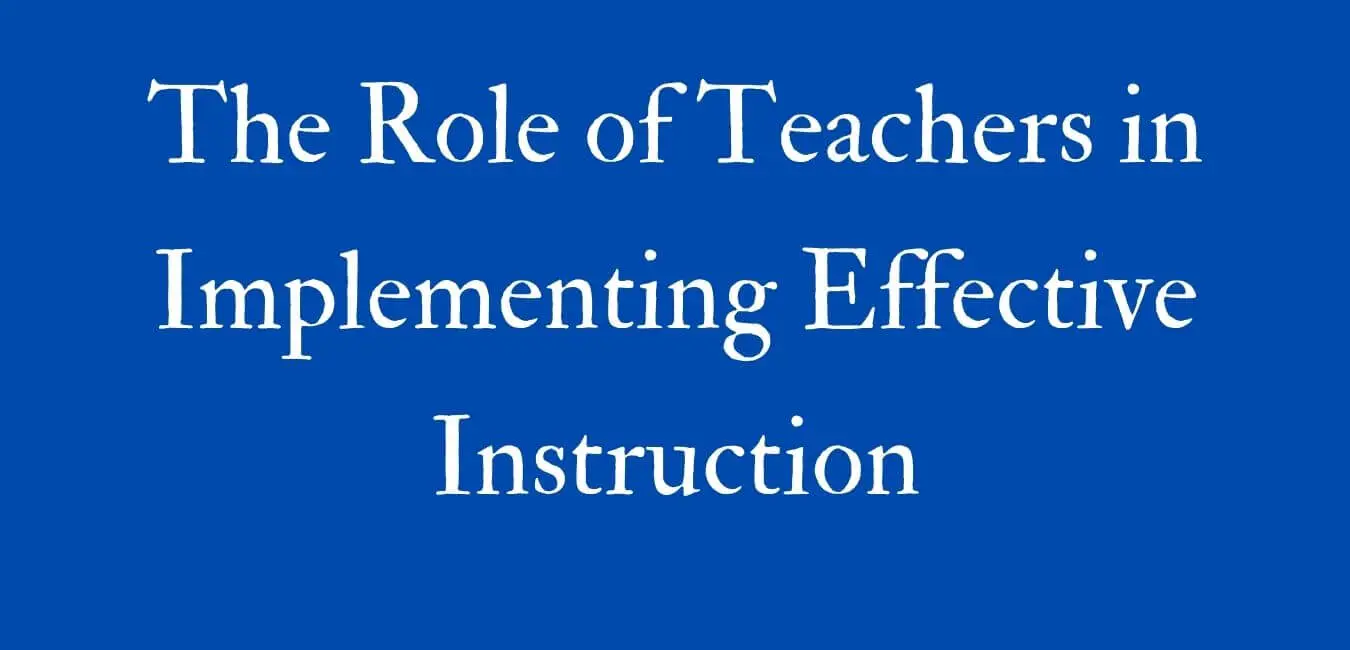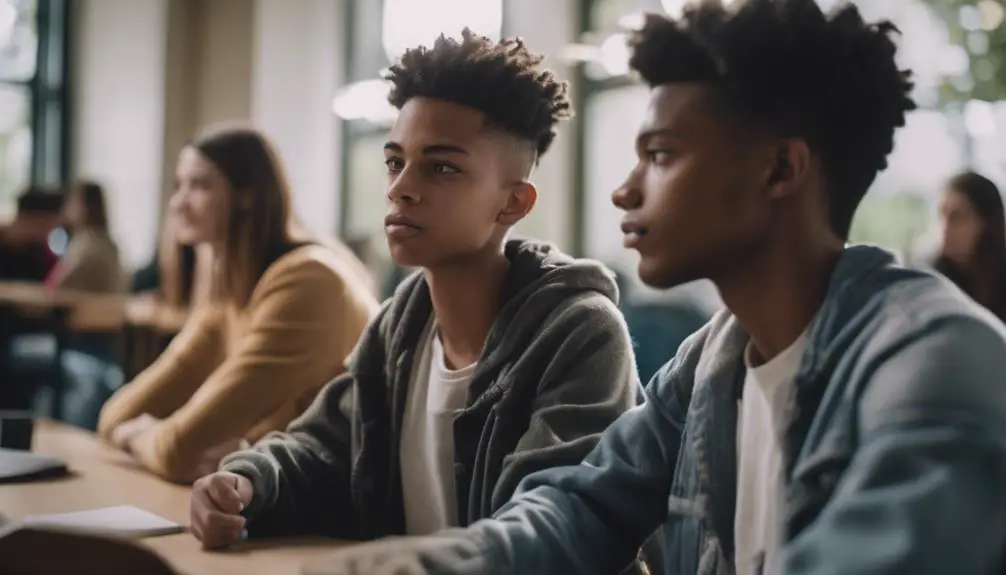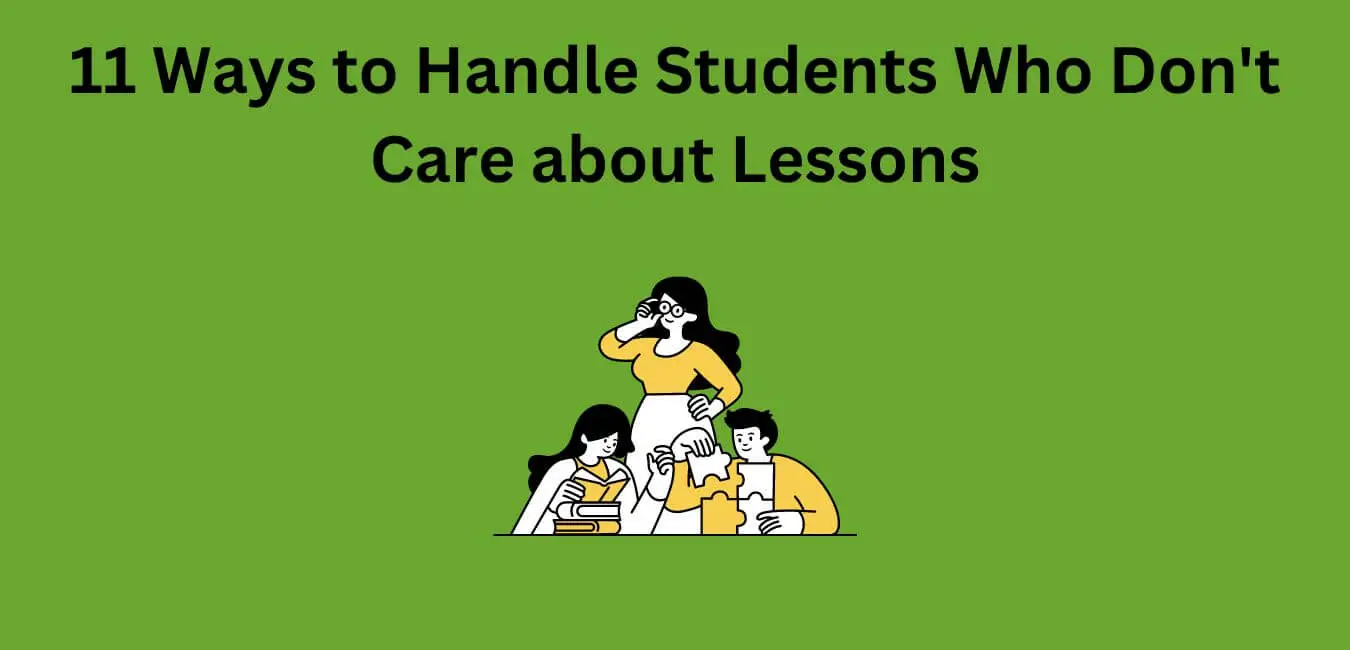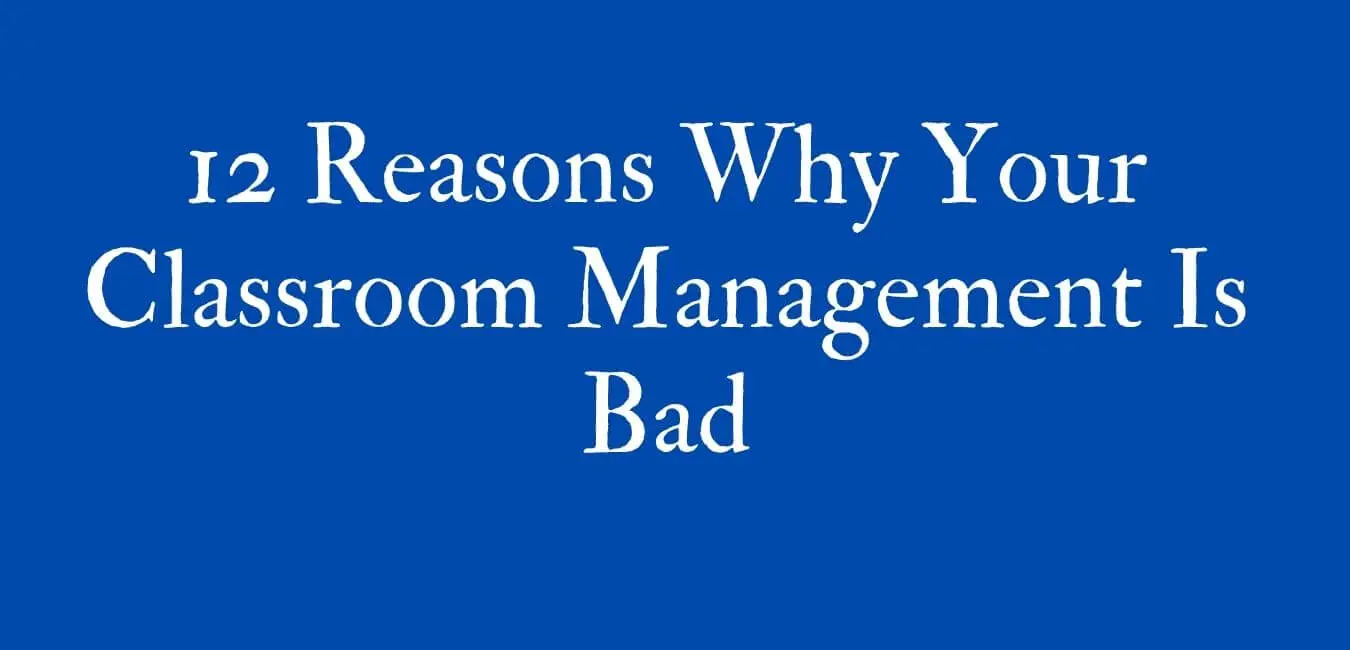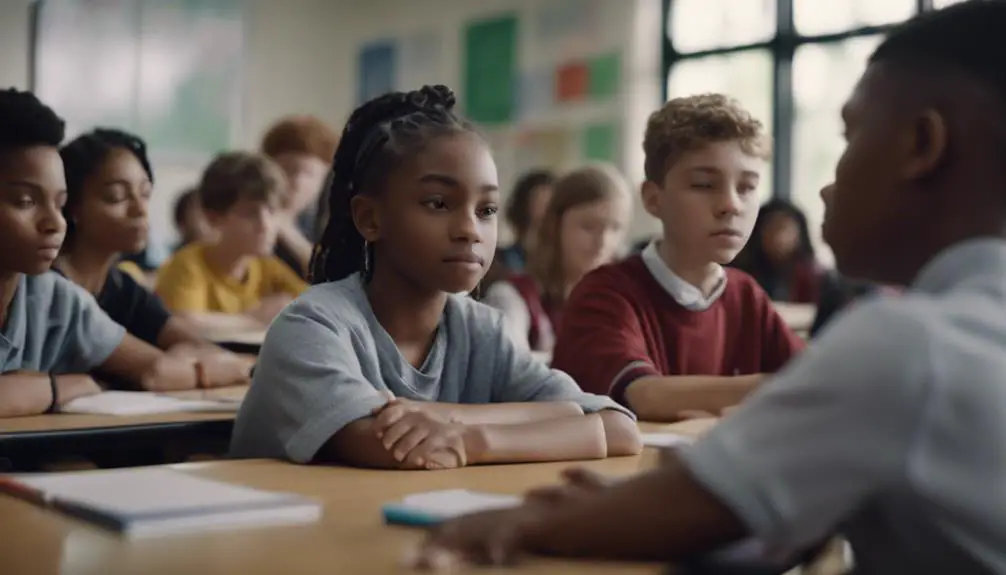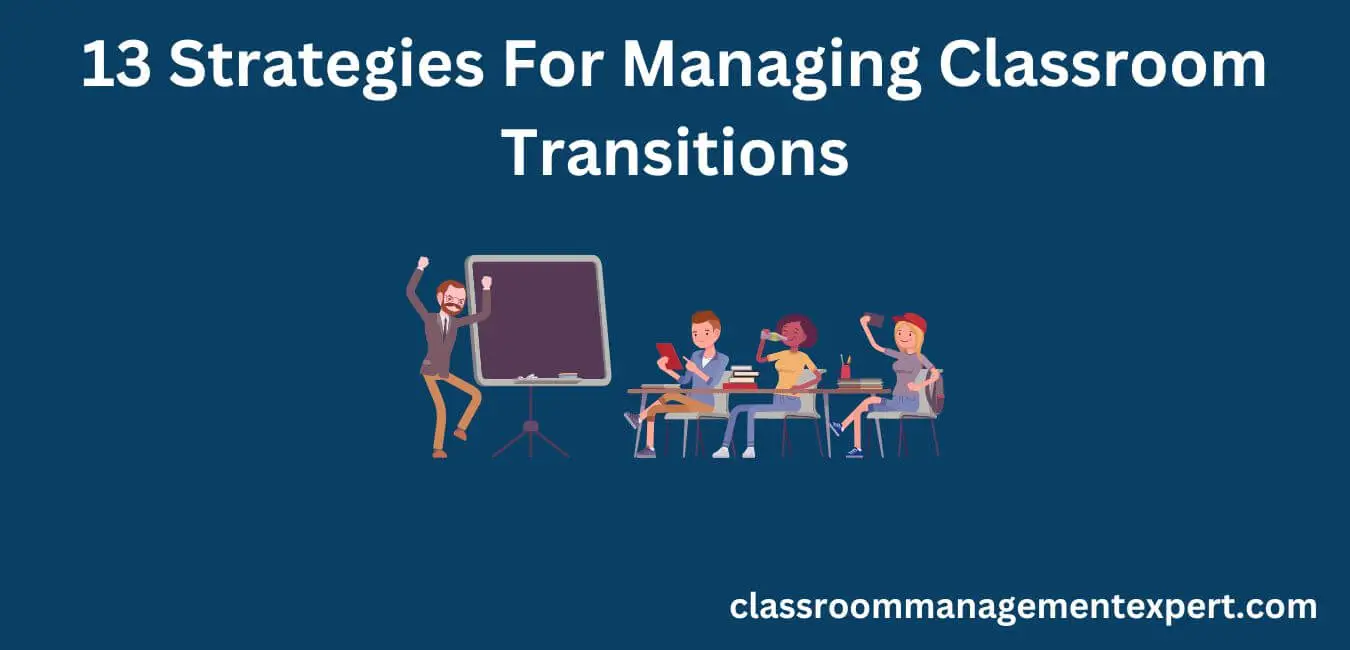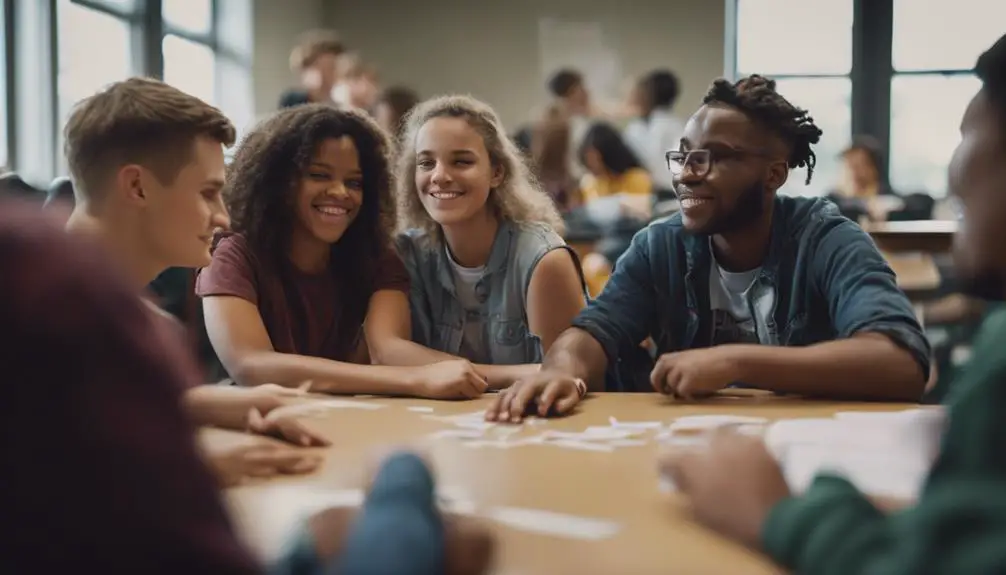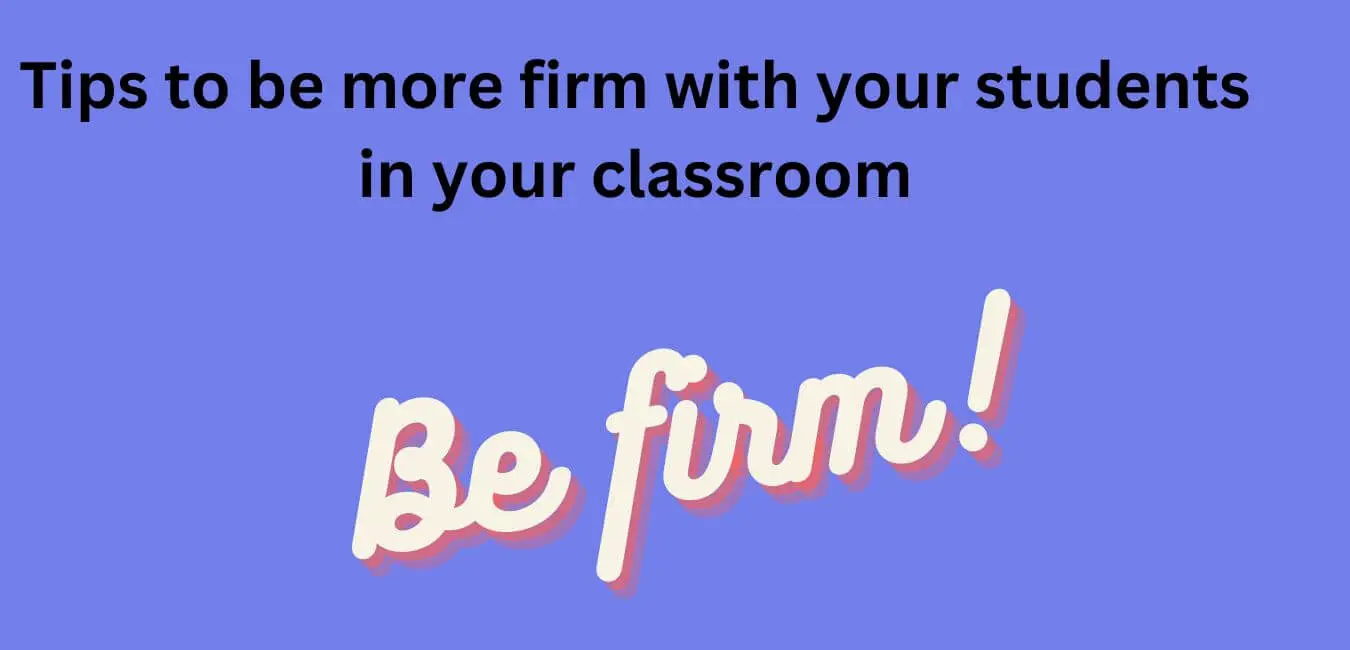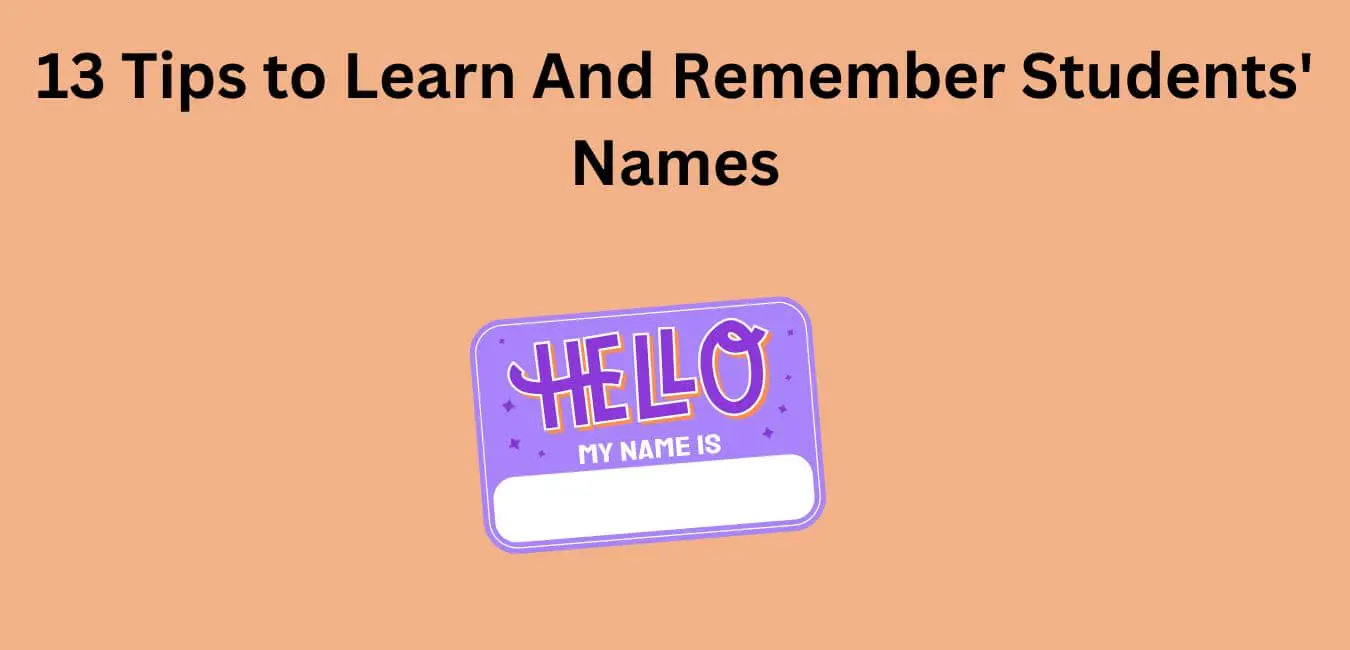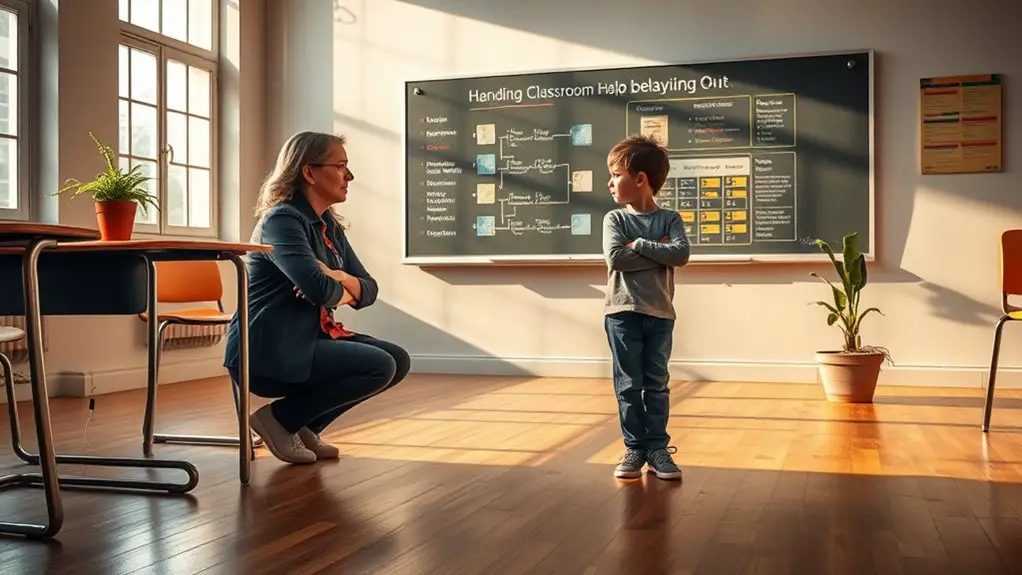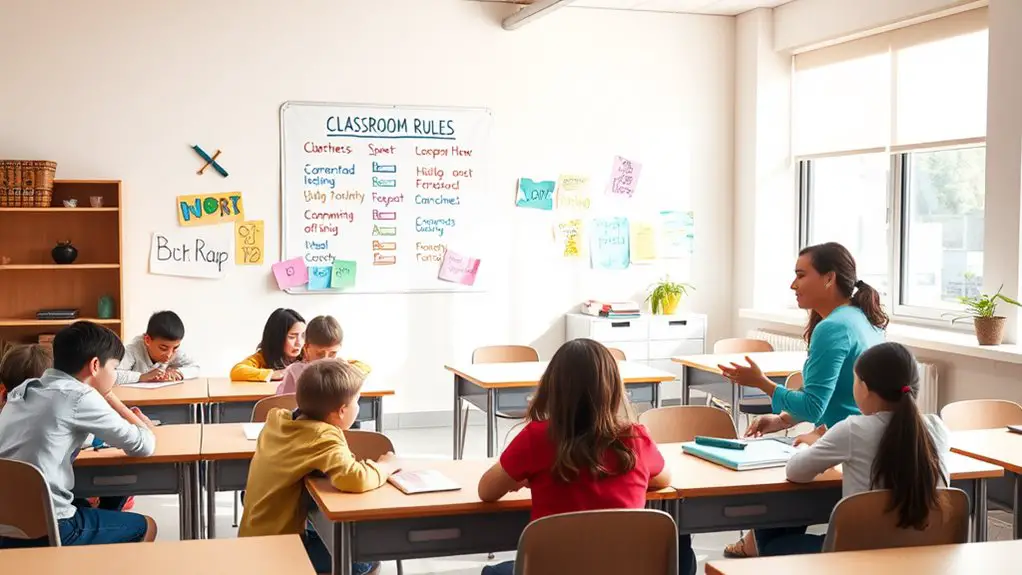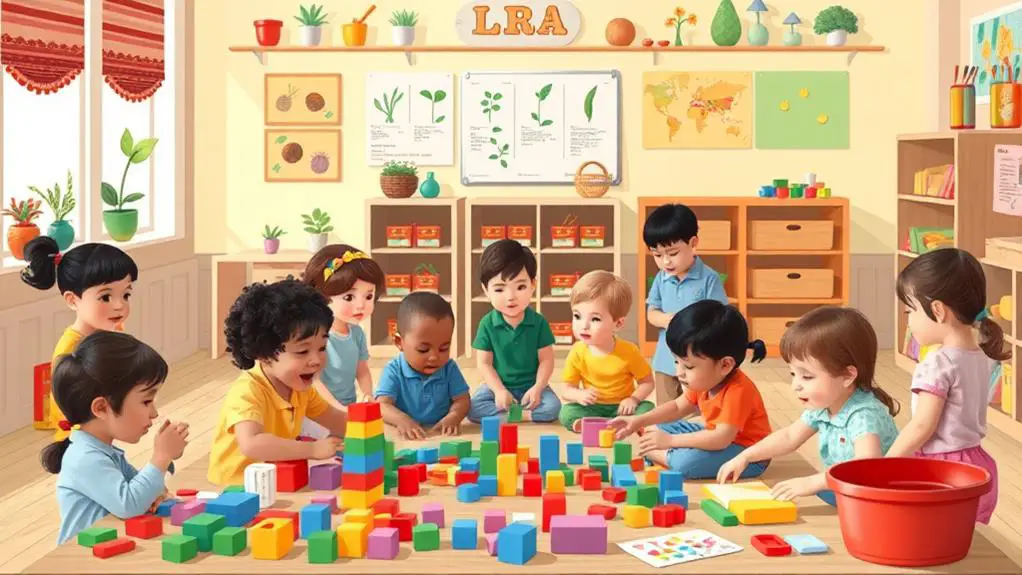Trust, respect, compassion, and care between teachers and students are critical in successful classroom management. We can achieve this through bonding with our students.
In this article, we are going to discuss the critical role played by the teacher-student relationship in classroom management. We will further look at the dos and don’ts of creating a relationship with students. If you are ready, let’s dive into the discussion. Also, for more classroom management techniques, check here.
Why Build Strong Bonds with Your Students
The teacher-student relationship is important for the following reasons:
Enhances Learning Experience
One key reason why I should build a strong and positive bond or relationship with my students is that it enhances their learning experience in numerous ways.
Building relationships with students is essential for creating a positive and supportive classroom environment.
When students feel a strong connection with their teacher, they’re more likely to actively engage in learning and participate in class discussions.
A positive relationship also promotes open communication, allowing students to feel comfortable asking questions and seeking help when needed.
Additionally, a strong student-teacher relationship fosters trust and mutual respect, which creates a safe space for students to take risks and make mistakes, leading to increased learning and growth.
Improves Classroom Behavior
Establishing a strong and positive bond with my students improves classroom behavior. When I prioritize building positive relationships with my students, I create an environment that promotes respect, trust, and cooperation. This, in turn, leads to improved student behavior.
Here are three strategies to build positive relationships and improve student behavior:
- Show genuine interest: Take the time to get to know your students on a personal level. Show interest in their lives, hobbies, and aspirations. By doing so, you communicate that you value them as individuals, which fosters a sense of belonging and encourages positive behavior.
- Foster open communication: Create a safe and supportive space for your students to express themselves. Encourage active listening and provide opportunities for them to share their thoughts and concerns. When students feel heard and understood, they’re more likely to engage positively in the classroom.
- Celebrate achievements: Recognize and celebrate the achievements of your students, both big and small. Acknowledging their efforts and successes boosts their self-confidence and motivates them to continue striving for excellence. Positive reinforcement encourages positive behavior and creates a positive classroom environment.
Promotes Trust and Respect
To promote trust and respect with my students, I prioritize building a strong and positive bond. Building positive relationships with your students is crucial because it creates an environment where they feel valued and supported. By fostering trust and respect, students are more likely to engage in the learning process and take risks without fear of judgment.
To achieve this, I employ various strategies to build positive teacher-student relationships. First, I actively listen to my students, showing genuine interest in their thoughts and feelings. This helps them feel heard and understood. Additionally, I create opportunities for open communication and collaboration, encouraging students to share their ideas and opinions.
Lastly, I demonstrate consistent fairness and respect towards all students, treating them as individuals with unique strengths and needs. By implementing these strategies, I can cultivate positive teacher-student relationships that promote trust and respect in the classroom.
Increases Student Engagement
Building a strong and positive bond with your students increases their engagement in the learning process. When students feel connected to their teachers and have a positive relationship with them, they’re more likely to be actively involved in their education. Here are three strategies to build positive relationships with students and improve student engagement:
- Show genuine interest: Take the time to get to know your students on a personal level, showing interest in their lives, hobbies, and goals. This demonstrates that you care about them as individuals, making them more invested in their learning.
- Provide a supportive environment: Create a safe and inclusive classroom where students feel comfortable expressing themselves. Encourage collaboration and celebrate their achievements, fostering a sense of belonging and motivation to participate.
- Offer varied and interactive lessons: Incorporate different teaching methods, such as hands-on activities, group discussions, and technology, to keep students engaged and cater to different learning styles.
Supports Academic Success
Developing strong and positive relationships with students greatly contributes to their academic success. By fostering positive relationships with students, we can create an environment that supports academic success. When students feel valued and connected, they’re more likely to be engaged in their learning and motivated to achieve their goals.
Positive relationships also enable effective classroom management, as students are more likely to follow rules and expectations when they have a strong bond with their teacher. Moreover, these relationships have a direct impact on student achievement. When students feel supported and cared for, they’re more likely to take risks, ask questions, and seek help when needed.
As educators, it’s our responsibility to build and maintain positive relationships with our students to ensure their academic success.
Fosters Positive Classroom Climate
By fostering positive relationships with my students, I’m able to create a welcoming and supportive classroom climate. This positive school environment has a profound impact on student outcomes and classroom management. Here are three reasons why building strong and positive bonds with students is essential:
- Improved Student Behavior: When students feel valued and respected, they’re more likely to exhibit positive behavior. By fostering positive relationships, I’m able to create a safe space where students feel comfortable expressing themselves and engaging in learning.
- Enhanced Academic Performance: A positive classroom climate promotes active participation and collaboration among students. When students feel supported and connected to their teacher, they’re more motivated to excel academically.
- Increased Student Engagement: Building positive relationships with students fosters a sense of belonging and encourages active engagement in the learning process. Students become more invested in their education when they feel connected to their teachers and peers.
Boosts Student Motivation
When fostering positive relationships with my students, it’s crucial to recognize that building strong and positive bonds with them boosts their motivation to succeed. As educators, our goal isn’t only to impart knowledge but also to inspire and empower our students.
By building positive and strong relationships, we create a sense of trust and support that encourages students to actively engage in their learning journey. A strong student-teacher relationship fosters a safe and nurturing environment where students feel comfortable taking risks, asking questions, and seeking guidance.
When students feel valued and understood, they’re more likely to be motivated and committed to their academic pursuits. This connection also enhances student engagement, as they feel a sense of belonging and connection to the classroom community.
Building positive relationships with our students is a cornerstone of effective teaching and can significantly impact their motivation and overall success.
Tips To Help You Build Positive Bonds With Students
When trying to create a connection with your students, try the following tips and guidelines. They will help a lot in your efforts.
Use traditions and routines
Establishing routines and traditions in your classroom can help you connect well with your students and their families. Daily, weekly, and monthly traditions with students and their parents of families improve the teacher’s relationship with them.
This is extremely helpful in advancing your course in the management of students’ behavior.
Weekly and monthly newsletters about happiness in class and school that students send home can help you burn well with students and their parents.
Another way of improving your relationship with students is true journaling student-led conferences and helpful homework routines. This increases the number of contacts you have with students as well as their families.
Make Good Impression
The teacher’s personality is an important factor in helping him or her develop healthier relationships with students.
Genuinely get interested in your student’s life and their success. This will make students feel you care for them.
They will therefore develop trust in you, and your connection with them will increase. Guard your speech responses and feedback about students’ work or questions positively.
Your answers and responses to students’ work and questions can tell how much you care for them, therefore keeping them positive and lovely.
This will make you attractive to them, and they will want to relate well with you. Avoid giving negative, demoralizing, sarcastic, and responses to your students.
Use Quality Verbal and Nonverbal Behaviors
Making use of both quality verbal and nonverbal behaviors can promote a positive relationship between teachers and students.
It helps to convey a strong message of acceptance and enhances healthier, social, and interpersonal interactions among teachers, students, and other students.
Some practical and useful verbal and nonverbal behaviors are humor, eye contact, empathy, pleasant speech, effective praise, cheerful facial expressions, and appropriate physical interactions.
If you put up behaviors such as what has been mentioned, you will become more attractive to your students, and they will feel comfortable getting closer to you.
Establish Trust Through Communication
One of the most effective ways I’ve found to establish trust with my students is through open and honest communication. When I make an effort to communicate openly with my students, it helps to build positive relationships and strengthen the student-teacher relationship.
Here are three tips to help you establish trust through communication:
- Active listening: Show genuine interest in what your students have to say. Give them your full attention and respond with empathy and understanding.
- Clear expectations: Clearly communicate your expectations for behavior and academic performance. This helps students understand what’s expected of them and reduces misunderstandings.
- Regular feedback: Provide timely and constructive feedback to your students. This helps them understand their strengths and areas for improvement and shows that you care about their progress.
Show Genuine Interest Daily
Building positive bonds with students requires a genuine daily interest in their well-being and development. To build positive relationships, it’s crucial to show genuine interest in your students on a daily basis.
This means taking the time to engage with them, asking about their day, and actively listening to their thoughts and concerns. Positive interactions are essential for fostering a strong student-teacher relationship. By showing genuine interest, you demonstrate that you care about their progress and success.
Additionally, getting to know your students on a personal level allows you to understand their unique needs and tailor your teaching approach accordingly. Remember, building positive bonds with students goes beyond the classroom and requires consistent effort to create a supportive and nurturing environment for their growth.
Encourage Open Dialogue
As a teacher, I encourage open dialogue with my students to foster positive bonds and create a supportive learning environment. Here are three ways I encourage open dialogue with my students:
- Active listening: I make a conscious effort to truly listen to my students. I give them my undivided attention, maintain eye contact, and provide verbal and non-verbal cues to show that I value their thoughts and opinions.
- Creating a safe space: I establish a classroom environment where students feel safe to express themselves without fear of judgment or criticism. I emphasize that everyone’s ideas are important and valid, fostering an atmosphere of respect and inclusivity.
- Providing constructive feedback: I use open dialogue as an opportunity to provide constructive feedback to my students. I offer praise for their achievements and provide guidance on areas for improvement. This helps them develop a growth mindset and encourages them to actively participate in their own learning journey.
Practice Active Listening Skills
To practice active listening skills and build positive bonds with my students, I prioritize giving them my full attention and valuing their thoughts and opinions. Building positive relationships with students starts with actively listening to what they’ve to say. By truly focusing on their words and nonverbal cues, I can show them that I genuinely care about their thoughts and feelings. This allows me to understand their perspectives and provide constructive feedback that’s tailored to their needs.
Active listening also helps me develop deeper connections with my students, fostering an environment of trust and respect. When students feel heard and understood, they’re more likely to engage in meaningful discussions and feel comfortable sharing their ideas. By practicing active listening skills, I’m able to strengthen my relationships with students and create a positive learning environment.
Celebrate Student Achievements
I actively recognize and applaud my students’ accomplishments to foster positive connections and build strong relationships with them. Celebrating student achievements is an essential aspect of building positive relationships with students and promoting their overall success.
Here are three ways in which celebrating student achievements can help build positive bonds and enhance student outcomes:
- Recognition and validation: By celebrating student achievements, we acknowledge their hard work and validate their efforts. This recognition boosts their self-esteem, motivates them to continue excelling, and creates a positive learning environment.
- Building trust and rapport: Celebrating student achievements shows that we care about their progress and success. This helps build trust and rapport, as students feel valued and supported. They’re more likely to engage in meaningful interactions and seek guidance when needed.
- Encouraging growth mindset: Celebrating student achievements encourages a growth mindset, where students believe that their abilities can improve through effort and dedication. By celebrating their achievements, we inspire them to set higher goals, take risks, and persist in the face of challenges.
Foster a Safe Environment
Building upon the importance of celebrating student achievements, fostering a safe environment is crucial in establishing positive bonds with students. When students feel safe, they’re more likely to engage in their learning, leading to improved student outcomes.
As an educator, it’s my responsibility to create a safe environment where students feel comfortable expressing themselves and taking risks. By setting clear expectations and consistently enforcing them, I can promote positive student behavior and create an atmosphere of respect and trust.
It’s also important to address any instances of bullying or harassment promptly and effectively. By fostering positive relationships and ensuring a safe environment, I can help my students thrive both academically and personally.
Provide Constructive Feedback
Providing specific and constructive feedback is essential in nurturing positive bonds with my students, as it allows me to further support and guide their growth in a safe and respectful learning environment. Here are three tips to help you provide constructive feedback and improve the relationships with your students:
- Be specific: When giving feedback, focus on the behavior or action that needs improvement rather than criticizing the student personally. This helps them understand what they can do differently to achieve better outcomes.
- Be timely: Providing feedback promptly after observing the student’s behavior allows for immediate reflection and adjustment. This helps them see the connection between their actions and the consequences, fostering personal growth.
- Be supportive: Remember that the purpose of constructive feedback is to help the student improve, not to shame or discourage them. Approach the conversation with empathy and offer guidance on how they can overcome challenges and achieve success.
Be Consistent and Fair
To maintain positive relationships with my students, it’s important to establish consistency and fairness in my interactions with them.
Being consistent means that I treat all students equally and apply the same rules and expectations to everyone. It means being reliable and following through on my promises and commitments. By doing so, I build trust and create a safe and predictable environment for my students.
Being fair means that I listen to their concerns, address their needs, and make unbiased decisions. It means giving each student an equal opportunity to succeed and recognizing their individual strengths and challenges.
Support Individual Strengths
Continuing with the topic of establishing positive relationships with my students, I’ve found that by recognizing and supporting their individual strengths, I’m able to build strong bonds with them. Here are three ways I support my students’ strengths to enhance our teacher-student relationships and improve student outcomes:
- Identify and acknowledge strengths: I make a conscious effort to recognize and celebrate each student’s unique abilities and talents. By acknowledging their strengths, I show them that I value their individuality.
- Provide opportunities for growth: I create a supportive environment where students can explore and develop their strengths further. Whether it’s through projects, assignments, or extracurricular activities, I encourage them to leverage their strengths to excel.
- Offer constructive feedback: I provide specific and constructive feedback that focuses on their strengths. This helps them understand how to enhance their abilities and build confidence in their skills.
Collaborate on Goals
I actively engage with my students to establish positive bonds by collaborating on goals together. Building positive relationships is essential for creating a supportive and inclusive classroom environment.
By involving students in setting goals, we can foster a sense of ownership and motivation towards their learning. Collaborating on goals allows me to understand their individual needs and aspirations, and tailor my teaching accordingly. It also helps students develop a growth mindset, as they see progress towards their goals.
To build positive relationships and achieve desired student outcomes, I implement various strategies. These include regular check-ins, where we discuss progress and make adjustments as needed. I also provide opportunities for students to reflect on their learning and set new goals.
Offer Guidance and Mentorship
I actively guide and mentor my students to foster positive bonds and support their learning journey. Building positive relationships is essential in creating a conducive learning environment. Here are three ways I offer guidance and mentorship to strengthen the student-teacher relationship:
- Actively listen: I make a conscious effort to listen to my students, both academically and personally. By understanding their needs, fears, and aspirations, I can provide tailored guidance that resonates with them.
- Provide constructive feedback: I offer feedback that’s specific, actionable, and growth-oriented. This helps students understand their strengths and areas for improvement, fostering a sense of trust and support in our relationship.
- Encourage student engagement: I create an environment that encourages positive interaction and active participation. By valuing their opinions, ideas, and contributions, I empower my students to take ownership of their learning and build their confidence.
Through offering guidance and mentorship, I aim to build lasting connections with my students and nurture their growth both academically and personally.
Show Empathy and Understanding
By demonstrating empathy and understanding, educators can foster positive bonds and create a supportive learning environment for their students. Showing empathy means putting ourselves in our students’ shoes and truly understanding their thoughts, feelings, and experiences. It requires active listening, validating their emotions, and offering support.
Understanding our students involves recognizing their unique strengths, challenges, and learning styles. It means adapting our teaching methods to meet their individual needs and providing opportunities for their success.
When students feel understood and valued, they’re more likely to engage in the learning process and develop a sense of belonging in the classroom. As educators, we have the power to make a difference by showing empathy and understanding towards our students, building positive relationships that will enhance their educational journey.
Create a Positive Atmosphere
To create a positive atmosphere and build strong bonds with students, it’s important to establish a sense of trust and respect in the classroom. Here are three tips to help you create a positive atmosphere and build positive relationships with your students:
- Foster a welcoming environment: Create a classroom that’s warm and inviting, where students feel safe to express themselves and take risks. This can be achieved by decorating the classroom with inspiring and student-centered displays, and by greeting each student with a smile and a friendly attitude.
- Encourage open communication: Create opportunities for students to share their thoughts, ideas, and concerns. Actively listen to them, validate their feelings, and respond with empathy and understanding. This will promote a sense of belonging and encourage students to engage in meaningful conversations.
- Promote collaboration and teamwork: Encourage students to work together on projects and assignments. Foster a cooperative learning environment where students support and help each other. This won’t only enhance their social skills, but also create a positive atmosphere where everyone feels valued and appreciated.
Don’ts in Building Relationships with Students
Avoid Favoritism or Bias
In my experience, avoiding favoritism and bias is a vital tool for building positive relationships with students. When we treat all students fairly and equally, it fosters a sense of trust and respect in the classroom. Here are three important things to remember in order to avoid favoritism or bias:
- Treat each student as an individual: Get to know each student’s strengths, weaknesses, and interests. This will help you provide personalized support and guidance to each student, without showing favoritism towards any particular student.
- Provide equal opportunities: Give every student the same opportunities to participate and succeed. Avoid giving preferential treatment or extra attention to certain students, as this can create feelings of exclusion or unfairness.
- Be aware of your own biases: We all have unconscious biases that can affect our interactions with students. It’s important to recognize and challenge these biases in order to create a truly inclusive and equitable learning environment.
Don’t Ignore Their Needs
Ignoring the needs of students is detrimental to building positive relationships with them. As educators, our responsibility extends beyond simply imparting knowledge; we must also prioritize the well-being and individual needs of our students. By acknowledging and addressing their needs, we can create an environment that fosters trust, open communication, and ultimately, positive relationships.
To illustrate the importance of not ignoring students’ needs, consider the following table:
| Ignoring Students’ Needs | Building Positive Relationships |
|---|---|
| Leads to disengagement | Encourages active participation |
| Creates a sense of neglect | Cultivates a sense of belonging |
| Hinders academic progress | Supports academic growth |
| Diminishes motivation | Enhances intrinsic motivation |
Avoid Being Too Strict
To build positive relationships with my students, I avoid being too strict and prioritize open communication and understanding. It’s important to create an environment where students feel comfortable expressing themselves and making mistakes. Here are three strategies to build a strong student-teacher relationship:
- Foster a supportive atmosphere: Encourage students to share their thoughts and ideas without fear of judgment. Show empathy and understanding towards their challenges and offer guidance when needed.
- Provide constructive feedback: Instead of being overly critical, focus on providing feedback that helps students grow. Highlight their strengths and offer suggestions for improvement in a respectful and encouraging manner.
- Be flexible and adaptable: Recognize that each student is unique and may require different approaches to learning. Adjust your teaching style to meet their individual needs and accommodate any challenges they may face.
Don’t Overreact to Mistakes
I must remain calm and understanding when my students make mistakes in order to build positive relationships with them. Overreacting to their mistakes can damage their self-esteem and discourage them from taking risks in the future. Instead, I should approach their mistakes as opportunities for growth and learning. By staying composed and providing constructive feedback, I can help them understand and correct their errors without making them feel judged or inadequate. This table illustrates some common mistakes students make and how I can respond effectively:
| Mistake | Effective Response |
|---|---|
| Forgetting homework | Remind them of the importance |
| of completing assignments | |
| Misunderstanding | Clarify the concept and provide |
| a concept | additional examples |
| Making a careless | Encourage them to double-check |
| error | their work and pay attention to |
| detail |
Avoid Lack of Communication
Continuing from the previous subtopic, one important aspect to avoid when trying to build positive relationships with students is a lack of communication. Building a strong student-teacher relationship requires open lines of communication.
Here are three ways to connect effectively with your students:
- Be approachable: Create a welcoming environment where students feel comfortable sharing their thoughts and concerns. Encourage them to ask questions and seek guidance when needed.
- Active listening: Show genuine interest in what your students have to say. Pay attention to their needs, ideas, and opinions. This will make them feel valued and understood.
- Provide constructive feedback: Regularly communicate with your students about their progress and areas for improvement. Offer specific and actionable suggestions to help them grow academically and personally.
Don’t Undermine Their Efforts
Undermining students’ efforts can hinder the development of positive relationships in the classroom. As educators, our goal is to build positive relationships with our students, creating a supportive and nurturing environment for learning.
It’s essential to avoid actions or behaviors that undermine their efforts and discourage their progress. One of the things we shouldn’t do when trying to build positive relationships is belittling or dismissing their hard work. Instead, we should acknowledge their efforts, celebrate their achievements, and provide constructive feedback to help them grow.
Avoid Lack of Empathy
To foster positive relationships with students, it’s crucial to demonstrate empathy and avoid behaviors that undermine their emotional well-being. Building a strong student-teacher relationship requires understanding and compassion. Here are three strategies to build positive relationships with your students:
- Listen actively: Take the time to truly listen to your students’ concerns, thoughts, and feelings. Show genuine interest and empathy by providing a safe space for them to express themselves.
- Show understanding: Put yourself in your students’ shoes and try to see things from their perspective. Validate their emotions and experiences, even if you may not agree with them. This will help them feel heard and valued.
- Practice patience and kindness: Be patient and understanding with your students, especially during challenging times. Show kindness and support, and avoid judgment or criticism. Remember that building positive relationships takes time and effort.
Don’t Show Disrespect
While building positive relationships with students, it’s important to refrain from showing disrespect and engaging in behaviors that may harm the student-teacher dynamic. Building a positive relationship requires mutual respect and understanding.
Disrespectful behavior, such as belittling or ridiculing students, can damage trust and hinder learning. It’s crucial to treat students with dignity and kindness, acknowledging their unique perspectives and experiences. Avoid making derogatory comments or using sarcasm, as these can create a negative and hostile environment.
Instead, focus on open communication, active listening, and empathy. By demonstrating respect for students, we can foster a safe and supportive classroom environment that promotes learning and growth.
Avoid Lack of Trust
I should build trust with my students to avoid damaging the student-teacher relationship. Building positive relationships with students is essential for creating a supportive and effective learning environment. To foster positive relationships, it’s important to avoid actions that can lead to a lack of trust.
Here are three strategies to build trust with students:
- Be consistent: Consistency in your words and actions helps students feel secure and understand what’s expected of them. It’s important to follow through on your promises and commitments.
- Listen actively: Taking the time to listen to your students shows that you value their thoughts and opinions. Encourage open communication and create a safe space where students feel comfortable expressing themselves.
- Show empathy: Understanding and acknowledging your students’ feelings and experiences can go a long way in building trust. Be compassionate and supportive, and try to put yourself in their shoes.
Conclusion
Effective teaching and learning occur when there is good classroom management. From the above, we noted that a healthier relationship between teachers and students plays a critical role in promoting effective management of students’ behavior. We finally identified what to do/not to do to enhance student-teacher relationships. You, therefore, have to work to relate well with your students.

